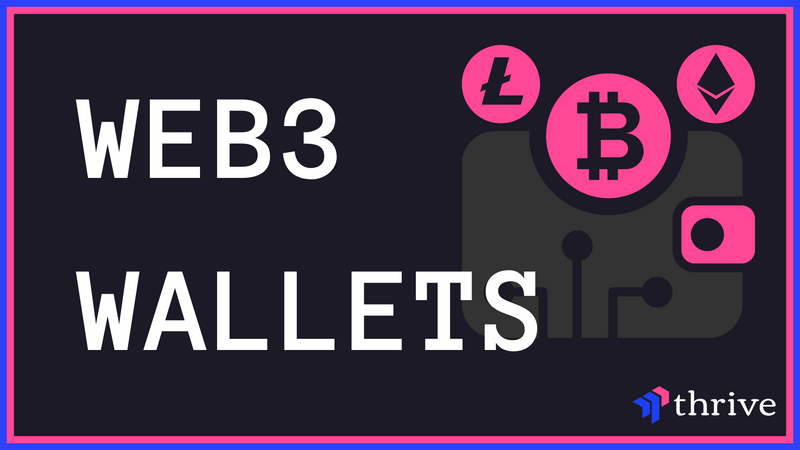Secure Your Digital Assets with Web3 Wallets

What is a Web3 Wallet? A Comprehensive Guide to Web3 Wallets
A Web3 wallet is a digital wallet that is used to store and manage cryptocurrency assets in a decentralized network. Unlike traditional centralized wallets, Web3 wallets connect to decentralized networks such as Ethereum, Binance Smart Chain, or Polygon, allowing users to interact with decentralized applications (dApps) and access their digital assets directly.In this guide, we will provide an in-depth explanation of what Web3 wallets are, how they differ from traditional centralized wallets, and why they are becoming increasingly popular among cryptocurrency users.
The Advantages of Web3 Wallets
One of the key advantages of Web3 wallets is that they are completely decentralized, meaning that users have full control over their digital assets without relying on intermediaries such as banks or exchanges. This eliminates the need for users to trust third-party organizations with their assets and reduces the risk of centralization and censorship.Another advantage of Web3 wallets is their ability to interact with decentralized applications. By connecting directly to the decentralized network, users can access and interact with a wide range of dApps and services, such as decentralized exchanges, prediction markets, and more.
Additionally, Web3 wallets provide users with enhanced security features, such as multi-sig wallets, smart contract-based wallets, and hardware wallets, which protect against hacking and theft. These security features make Web3 wallets a preferred option for cryptocurrency users who value the security of their digital assets.
Types of Web3 Wallets
There are several different types of Web3 wallets, each with its own unique features and benefits. These include:Mobile Wallets: These are Web3 wallets that are available as mobile apps, allowing users to manage their digital assets on the go. Mobile wallets are convenient and easy to use, and they offer enhanced security features such as biometric authentication.
Desktop Wallets: Desktop wallets are Web3 wallets that are installed on a user's computer, providing a more secure and private solution for managing digital assets.
Hardware Wallets: Hardware wallets are physical devices that store digital assets and provide users with added security. They are the most secure type of Web3 wallet, and are recommended for users who hold large amounts of cryptocurrency.
Multi-Sig Wallets: Multi-sig wallets are Web3 wallets that require multiple signatures or approvals before transactions can be executed, providing an added layer of security for users.
Smart Contract-Based Wallets: These are Web3 wallets that are built using smart contracts, providing users with enhanced security and functionality.
Choosing the Right Web3 Wallet
When choosing a Web3 wallet, it's important to consider a number of factors, including security, ease of use, and compatibility with your decentralized applications.Some popular Web3 wallets include MetaMask, Argent, Gnosis Safe, and MyEtherWallet. Each of these wallets offers a unique set of features, and it's important to choose the right wallet for your needs based on your individual requirements.
In conclusion, Web3 wallets are becoming increasingly popular among cryptocurrency users due to their decentralized nature, enhanced security features, and ability to interact with decentralized applications. By choosing the right Web3 wallet, users can enjoy greater control over their digital assets and access a wide range of dApps and services.
READ MORE: MetaMask: The DeFi Crypto Wallet
Conclusion
Web 3 wallets are the next generation of cryptocurrency wallets that are designed to work with decentralized applications (dapps) built on blockchain technology. They offer users more control and security over their assets, as well as the ability to interact directly with dapps on the blockchain.One of the key features of web 3 wallets is that they are non-custodial, meaning that the user has complete control over their private keys and assets. This is in contrast to traditional cryptocurrency exchanges, which hold the user's assets on their servers and often have the ability to freeze or seize them. With a web 3 wallet, the user is in full control of their funds, and no one else has access to them.
Another important aspect of web 3 wallets is their compatibility with decentralized exchanges (DEXs). With traditional centralized exchanges, users have to trust the exchange with their assets, and the exchange often holds custody of the user's private keys. With a web 3 wallet and a DEX, the user can trade their assets directly from their wallet, without having to trust a third party with their private keys or assets.
Another key feature of web 3 wallets is their integration with decentralized identity solutions, such as decentralized identifiers (DIDs). This allows users to have control over their personal data, as well as the ability to use their digital identity to access a variety of dapps and services.
There are many different types of web 3 wallets available, including hardware wallets, software wallets, and browser wallets. Each type of wallet has its own advantages and disadvantages, and the choice of wallet will depend on the user's individual needs and preferences.
Web 3 wallets are a crucial component of the decentralized web, offering users more control, security, and privacy over their assets and digital identity. As the decentralized web continues to grow, web 3 wallets will play an increasingly important role in the way people interact with dapps and manage their digital assets.
READ MORE: Choosing the Right Web3 Platform




